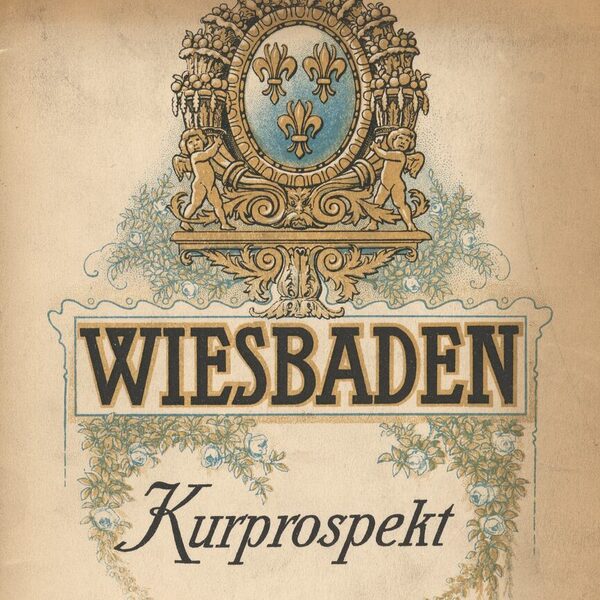City advertising
In order to be able to compete with the other German spas, Wiesbaden undertook increased and targeted efforts in the area of public advertising from the first third of the 19th century.
Since around 1820, balneological works had been promoting visits to the healing springs from a scientific point of view; even before that, and increasingly in the 1830s, travel reports, also in French and English, described the pleasant life in the spa town. It was the railroad that created the conditions for a significant increase in tourism - from this time onwards, there were also increasing signs of more systematic efforts to attract spa guests. From around 1850, spa calendars, tourist guides, albums, town maps and engravings advertising the sights began to appear with greater regularity.
Advertising took on a new dimension after Nassau was annexed: Now a more public relations effort directed by the city administration can be perceived. From 1867, brochures were collected from competing spa towns, such as Karlsbad and Schlangenbad, and advertisements were published in English, French, Belgian and American newspapers. The later municipal spa director Ferdinand Hey'l emphasized the importance of "advertisements and advertisements" for the town in his "Proposals for the operation of the municipal spa administration" written in 1871. City advertising developed into an intensively cultivated instrument of urban policy.
After Wiesbaden had already hosted major congresses in Nassau times, such as the General Assembly of German Naturalists and Physicians in September 1852, the city now began to be marketed specifically as a conference venue and congress city. From the turn of the century onwards, this was also done with the help of modern media such as advertising stamps, postcards, posters, neon signs and finally film.
The economic collapse of the First World War and the subsequent period of occupation also brought an end to the city's traditional image of luxury. After 1933, the brown rulers once again promoted Wiesbaden as a world spa and congress city, but now under the changed ideological auspices of the "people's cure"; the slogan "Ancient healing power, eternal beauty" and a uniform image for all advertising products were established.
After 1945, the world spa town continued to be promoted, for example in 1954 as a "classic place of pleasure and enjoyment" and in 1955 as a "spa and festive town". After the construction of the Rhein-Main-Hallen in 1957, the focus shifted more and more to congresses and the new function as a business location and shopping city, but Wiesbaden was still described as a "spa and congress city with charm" in 1971.
Since the 1980s, a trend towards more sobriety can be observed: newer image brochures simply advertise with the name and logo of the city.
Literature
Giese, Torben: Modern urban image politics in Frankfurt am Main, Wiesbaden and Offenbach. Studien zur Geschichte der Stadt Frankfurt, 57, Frankfurt am Main 2010.
